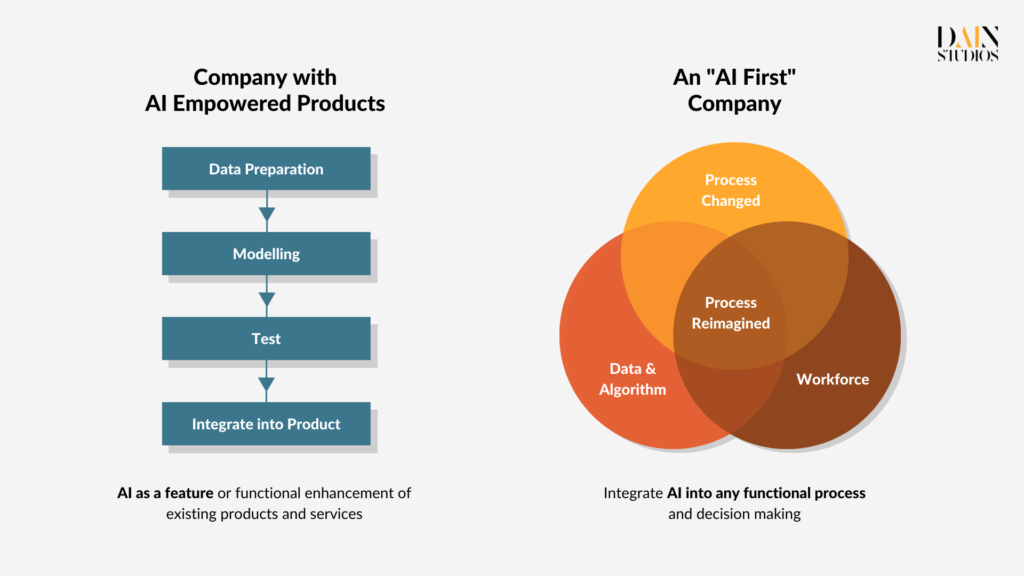Business impact, not technology, should drive corporate AI-agendas, says Dirk Hofmann. AI can only give companies a competitive edge if they first understand their business needs.
I want to break a lance for “boring” artificial intelligence (AI). Sure, you might have read about how AI can now help detect illegal logging in the Amazon, allow a robot chef to taste food and help design drugs humans cannot think of. But these are all pushing-the-envelope developments with no immediate relevance for most companies – and usually unhelpful distractions. The research firm Gartner talks about a “hype cycle” for emerging technologies in which exciting innovations quickly reach the Peak of Inflated Expectations, slump into the Trough of Disillusionment and only slowly edge back to the everyday Plateau of Productivity.
Buzzword-technologies like Edge AI, which stores and crunches data in users’ devices directly, or Computer Vision, which allows computers to understand images or videos, will by that measure take another two to five years to mature into readily usable applications. These examples show why companies have to avoid – as strange as it sounds – a technology -led approach to AI. They should, instead, focus on the problem they want to solve – and factors like privacy or security that may play a role. Only when they’ve done that will they know whether, say, Edge AI is the right thing for them. AI use has to be driven by real needs.
Gartner Hypecycle for AI 2020, 2021, 2022. General hype makes it hard to distinguish between real risks & opportunities of innovation. Source: Gartner 2020, 2021, 2022.
AI does not deliver a magic bullet in the form of one technology or another, it does not get rid of a company’s challenges at the click of a button – it comes to dominate them by a thousand cuts.
Done correctly, “boring” AI is excitingly effective
Some 27 percent of companies surveyed for McKinsey’s last The State of AI survey attributed at least 5 percent of 2020 earnings before interest and taxes to AI, up from 22 percent the prior year. Indeed, while AI’s revenue benefits stagnated or sagged in the first year of the pandemic, the December 2021 report said cost savings leapt in the course of an AI-deployment push. For example, 51 percent of respondents said their companies had been able to reduce the cost of service-operations by at least 20 percent, compared with only 7 percent of respondents in 2019. Done correctly, “boring” AI is excitingly effective.
But it doesn’t take the hard work and perseverance out of making an impact. Even with AI, raising operational efficiency is about squeezing 0.1 percent of cost out here and 1 percent there and on and on. The trick is to know where even small savings can be made and how to deploy AI to realize them: AI-supported warehouse optimization can cut overall costs by improving “picking paths” and storage organization; AI-supported people management can optimize staffing and the planning of work shifts; both could be enhanced by better supply and inventory distribution in the input and more demand-prediction on the output side.
Companies need to devise impact-led agendas
Companies need to devise impact-led agendas – rather than technology-led ones – before they turn to the solutions AI has to offer. They do this by first assessing the maturity of the company to identify the links between organizational and technological capabilities – an understanding of their business precedes an understanding of AI. And the next step is much simpler than it used to be: with its tasks identified, companies can benefit from thousands of “off-the-shelf” AI-applications, available as open source or or as services from various vendors. They will still need data scientists to build core AI capabilities, but data literate “citizen data scientists” will be able to leverage and further develop them.

And, of course, this kind of work should not be restricted to a company’s manufacturing operations. It can and should be applied to procurement, technology development, human resources and company infrastructure. As AI takes root in and impacts these different areas, the company then has to make the leap from using AI as a feature or enhancement of its existing products and services to integrating AI into all its functional processes and decision-making. AI in this constellation gives the company a real competitive edge. It transforms a company with AI-empowered products to one that truly thinks and acts “AI first.”